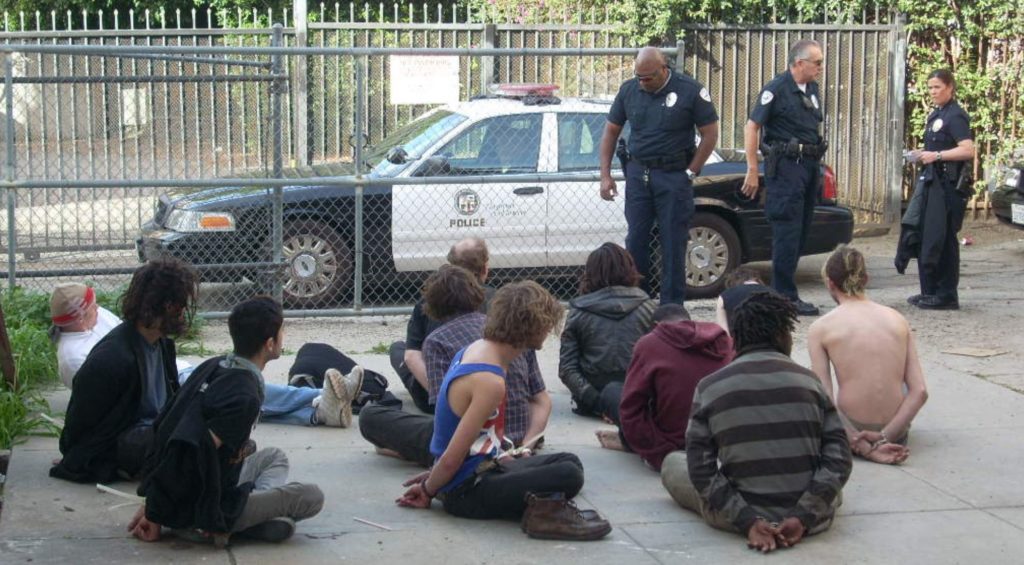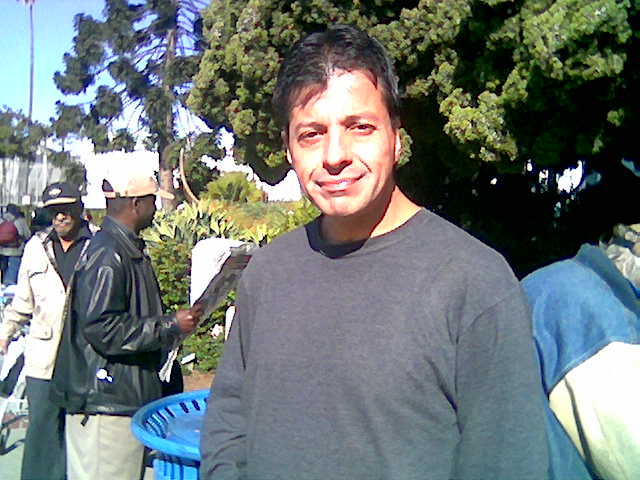 By Janet Phelan
By Janet Phelan
Around 2009, 40,000 people disappeared from the streets of Los Angeles. The biannual homeless census for 2005, conducted by the Los Angeles Homeless Service Authority (LAHSA), recorded 82,291 individuals as homeless at that point in time. In 2009, at the height of the economic crisis, which rendered many more homeless across America, the number dropped to 42,694.
What happened to nearly 40,000 people? Was there simply a counting snafu or did that many people actually disappear? And if they did, who would know?
Would you miss the fellow sleeping under the hedge at the apartment house across the street? Would you take note if the bedraggled couple, often seen sitting in front of the local 7-Eleven and panhandling, were no longer there? Considering that these are people known as having almost no social support system or connections and often transient, who would know if something nefarious had taken place?
The signs in and around Los Angeles point to the strong possibility that something untoward did indeed happen. LAHSA itself has been unable to account for the breathtaking drop in numbers. When initially contacted, LAHSA asserted that the difference was tied to a change in protocol for counting “the hidden homeless.” When pressed to state that this accounted for the drastic decrease in population, LAHSA admitted it did not.
So we turn to the legal infrastructure in Los Angeles for further signs.
Police abuse of homeless had become significant in Los Angeles at that time, so much so that the ACLU filed a lawsuit in 2009 against the City of Santa Monica, a wealthy beach-side community which is adjacent to the sprawl called LA, alleging police targeting and civil rights abuses of homeless people. In the suit, there is a sidelong reference to some of the discrepancies in the homeless count. The lawsuit states:
The City of Santa Monica reports that in 2009 an estimated 915 homeless residents sleep in Santa Monica each night, although less than twenty percent of this population can be accommodated in local emergency and transitional shelters. (Other sources indicate the homeless population of Santa Monica could be much higher. For example, the Los Angeles Homeless Services Authority commissioned a survey in 2005, which counted approximately 2,000 homeless individuals residing in Santa Monica on a given day).
That is a decrease of over 50% during a period of time when the population should have been exploding.
According to the 09 ACLU lawsuit, the police in Santa Monica were regularly “harassing, citing and arresting” chronically homeless individuals, in violation of their constitutional rights. The suit states that the City of Santa Monica violated the civil rights of the homeless by “1) Making it a crime to sleep in public places despite the fact there is no shelter available for most of the homeless in Santa Monica and by 2) selectively and discriminatorily citing homeless and disabled residents for sitting, sleeping or smoking cigarettes in public…”
But did the City and its police force do even more than harass, cite and arrest?
I was in Santa Monica from 2003 until mid 2006. It was clear at that time that law enforcement agencies were doing quite a bit more than harassing the homeless. They were, in fact, mining their data and involved in overt and covert efforts to ID the population.
Example 1– Bullied into turning over an ID
A police car would pull up in front of a bus bench, where an obviously homeless person was sitting, waiting for a bus. One of the cops would then rummage through the trash can by the bench. Pulling out an empty beer can, the officer would then state he was arresting the individual for drinking in public.
Protests to the contrary were ignored. The cop would then demand the individual’s ID, and bullied into submission, the person generally handed it over. After writing down the details, the cop would hand the ID back, stating, “This time we will let you off,” get back into the police car and drive off, leaving Mr. Waiting for the Bus entirely bewildered but thanking his lucky stars.
Example 2– Feds Planted Among the Homeless
A federal agent who went by the name of “David Moreno” was regularly seen at homeless agencies and public feedings in Santa Monica. I had encountered “Moreno” previously and he had admitted to me his undercover status, though he declined to state which agency he worked for. (Actually, he was fairly obvious. His blue jeans were pressed and his shoes were expensive Italian leather. He must have thought the rock n roll t-shirt was a good enough costume).
Moreno would wander through the public feedings with a camera, slyly taking photos of homeless individuals. When this became of concern to people, he began to position himself across the street with a telephoto lens.
Homeless Records “Not Available”
The Los Angeles Police Department was contacted asking for their arrest records dealing with vagrancy and other homeless “crimes” for the years from 2005 through 2009. Initially agreeable, the PIO for the LAPD then reversed herself, saying there was no such data.
The PIO for the Santa Monica Police Department at first stated he would be able to produce these arrest records. Lt. Saul Rodriguez then reversed himself, stating “I have consulted with my Crime Analyst and have been informed that the data set you are requesting would be way too over burdensome to gather. Additionally, she is not willing to release any data set requested for that time frame because she believes the accuracy will not be at all reliable.”
A shroud of silence seems to surround this issue. The ACLU was contacted with questions as to what other research might have been accomplished in pursuit of their 2009 suit against the City of Santa Monica. The ACLU lawyers declined to respond. The law firm of Munger, Tolles and Olson, which also contributed legal work to the lawsuit, was contacted and also refused to speak to this reporter on the record. The lead attorney in the lawsuit, Mark Rosenbaum, now with Public Counsel, agreed to be interviewed and stated that the lawyers did no research which might have resulted in any statistics showing the numbers of homeless individuals taken into custody and that all their research was strictly “anecdotal.”
The agency which serves as the homeless hub in Santa Monica, OPCC (also known as The People Concern), has refused to release any statistics concerning their service figures for the years in question. The City of Santa Monica, which is the major funder for OPCC, supported OPCC’s decision not to release service figures. These figures also could have potentially buttressed—or resolved—concerns about a dramatic decrease in homeless residents during the period dubbed as the Great Disappearance.
OPCC is listed as a “private charity” even though over 98 percent of its funding is from government agencies. Recently, concerns have been publicly raised that OPCC has flagrantly violated numerous laws governing its operations. Oddly, OPCC seems to be coated in teflon and is emerging from each and every allegation with no culpability whatsoever.
Chillingly, a piece of military law called Army Regulation 210-35 might shed some light on the whereabouts or destination of the forty thousand missing. This regulation, passed during the Reagan years, allows for the setting up of civilian inmate labor prison camps on military bases. According to its mandates, these camps should be run according to the mandates of the McKinley Homeless Assistance Act, which points to the possible denizens of such camps. According to 210-35, press coverage of these facilities is restricted and deaths in the camps will not be the responsibility of the facility.
If this provides a glimpse into the fate of almost 40,000 people, and given the inaccessibility of records and the insular and disconnected state of being homeless, how would we ever know?
Janet Phelan is an investigative journalist and author of the groundbreaking exposé, EXILE. Her articles previously appeared in such mainstream venues as the Los Angeles Times, Orange Coast Magazine, Long Beach Press Telegram, etc. In 2004, Janet “jumped ship” and now exclusively writes for independent media. She is also the author of two collections of poetry—The Hitler Poems and Held Captive. She resides abroad. You can follow her on Facebook here: https://www.facebook.com/profile.php?id=100012703457651


Be the first to comment on "The Great Disappearance of 2009"